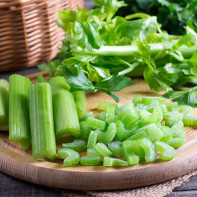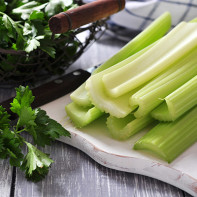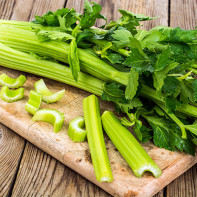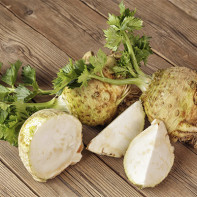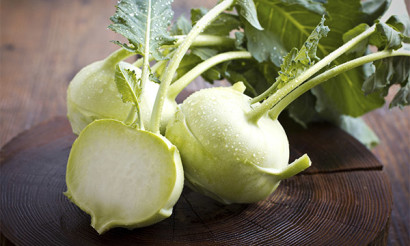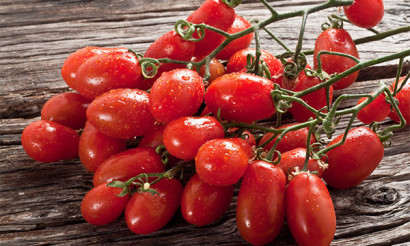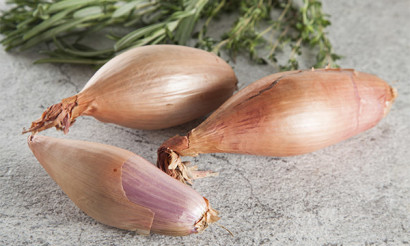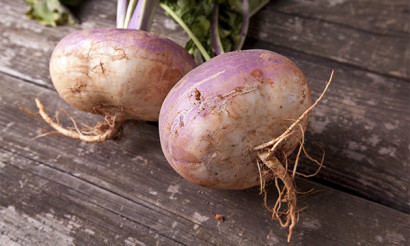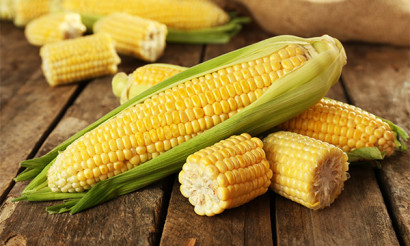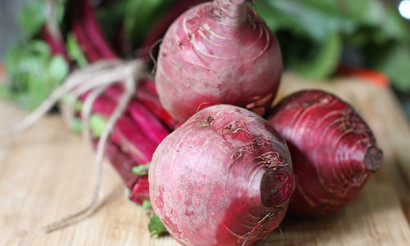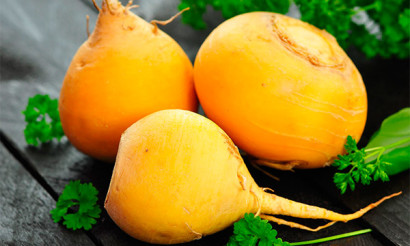Celery: composition, useful properties and contraindications.
Everyone knows about the benefits of green vegetables and fruits. The article will describe in detail the useful properties of celery. In our country, this plant is gaining in popularity and distribution due to its useful properties and rich composition. Celery is a part of many dishes. It is stewed, baked, fried, consumed fresh and used as a flavorful seasoning.
- What is celery and what does it look like?
- Types
- What is the difference between celery and parsley
- Composition and calories
- How to use celery
- General benefits
- For Women
- For Men
- For Pregnancy
- For breastfeeding
- For Children
- The Leaves and Stems of Celery
- Useful properties of celery root
- The benefits and harms of celery juice
- How to use celery for weight loss
- Celery in medicine
- Diabetes
- For pancreatitis
- For gastritis
- For the Bowel
- For constipation
- For gout
- For colitis
- For the liver
- For hemorrhoids
- Pri cholecystitis
- Celery-based folk medicine recipes
- Premenstrual syndrome or menopause
- Bladder stones
- For prostatitis
- To reduce cholesterol
- Cystitis
- In nervous disorders
- For skin injuries
- For normalization of reproductive activity
- Celery in cosmetology
- For Face
- For Hair
- Harms and Contraindications
- Celery allergy symptoms
- How to choose and store celery
- Can I freeze
- How to eat celery correctly
- How much can I eat per day?
- Is it possible to eat on an empty stomach at night?
- Can I Eat Raw?
- How to peel celery correctly
- What can be cooked from celery: Recipes
- Juice
- Salad
- Soup
- Smoothie
- How to roast
- Can we give celery to animals?
- Guinea pigs
- Dogs
- Cats
- Hamsters
- Ducks
- Rabbits
- Parrots
- Interesting facts about celery
What is celery and what does it look like?
Celery is a green-colored vegetable. It is bred in most cases because of the stalks, which have useful properties and a unique flavor. The seasoning made from the plant has a sweetish taste with notes of bitterness.
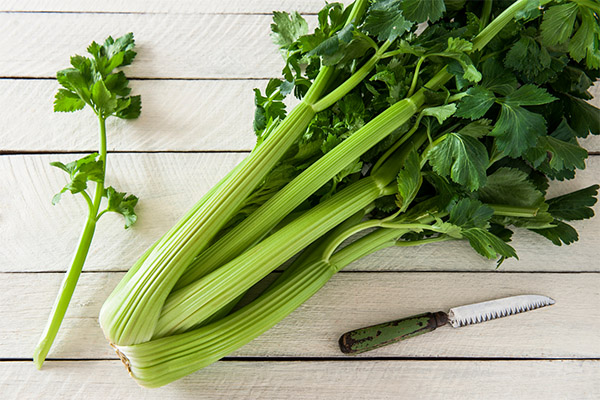
Celery reaches a height of up to 1 meter and looks like a plant with fleshy stems, large leaves and a strong root. It is a member of the Umbrella family and can be annual or perennial. Any part of the vegetable can be used in cooking. In European and Asian cuisine, the root, leaves, seeds and stems are used as a flavorful addition to dishes.
The root of the plant is covered with many hairs and has a brown hue. After peeling, it becomes white in color and smooth to the touch.
Many people compare celery seeds to cumin. They have a distinctive aroma, a dark brown color and have an oblong shape with a longitudinal ribbing.
Types
Three species of the plant are distinguished:
- root;
- petiolate;
- leafy.
The root type is characterized by a fleshy round root and a rich, pleasant taste. It is most often used for cooking various dishes, since during the heat treatment the aroma of root celery reveals even stronger.
Petiole celery is the most widespread among the gourmets of culinary art. In addition, this type contains the greatest number of useful substances.
The leafy form of the plant is used for salads, baking, and as a condiment. It does not have large petioles and roots. Young leafy celery has the most pronounced useful properties.
The difference between celery and parsley
- Parsley has no large stems.
- Plants have different flavors.
- Wild varieties are common in territories of different continents. Parsley is found in Greece, Algeria, Spain, and Macedonia. Celery grows in Mediterranean countries, in areas of high humidity, particularly near the riverside.
- Celery root contains more sodium than parsley leaves.
Composition and calories
A 100 g of the plant contains 0.9 g of protein, 0.1 g of fat and 2.1 g of carbohydrates. The energy value of the product is only 13 kcal.
The chemical composition is represented by dietary fiber, organic acids, vitamins B, A, C, E, PP, K. In addition, celery is rich in micronutrients, among which sodium dominates - 200 mg per 100 grams of product.
What is useful for celery
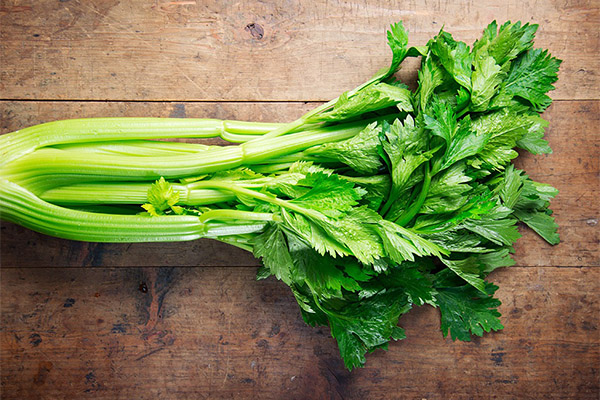
General benefits
The plant owes its useful properties to its rich composition. The main benefits of the product:
- controls the level of cholesterol;
- Has a diuretic and choleretic effect;
- Has a beneficial effect on the nervous system;
- normalizes blood pressure;
- Saturates the body with vitamins and minerals;
- strengthens the immune system.
For women
Consumption of celery has the following beneficial effects on the body of the fair sex. Product:
- It has a negative caloric value, that is, the body spends much more energy to digest the dietary fiber contained in celery than the vegetable itself, so the inclusion of the product in the diet helps to maintain a slender figure, which is relevant for every woman.
- It promotes the removal of all excess fluid from the body.
- Beneficial effect on the nervous system, preventing the development of depression.
- Facilitates premenstrual states.
- Normalizes blood pressure.
- Improves the condition of the skin and hair.
For men
Celery is useful not only for the female body, but also for men. With regular use as a food, the following positive changes are observed in the body of a representative of the male sex:
- Blood pressure is reduced.
- The excretion of uric acid from the body is accelerated.
- Lowers cholesterol levels.
- Testosterone levels are regulated and male libido increases.
- Protein absorption is accelerated.
- Faster recovery of the body after heavy physical exertion.
- A significant concentration of sodium prevents the accumulation of uric acid crystals.
Pregnancy
During pregnancy, a woman has to limit herself in many familiar things. Adjustments should also be made to the diet. Celery is one of those foods that you should completely abstain from during pregnancy. There are a number of reasons for this:
- The components of the product increase blood flow to the uterus and can cause miscarriage or the beginning of the development of premature birth.
- Essential oils can cause severe allergic reactions.
- There is an increased likelihood of the development of gas.
During pregnancy, celery can be used externally. Creams or ointments based on this plant reduce swelling. Tincture and juice of celery improve the condition of damaged skin due to its zinc content.
When breastfeeding
As during pregnancy, during breastfeeding it is worth refraining from eating celery, as the substances contained in any eaten products penetrate into the mother's milk. Celery can cause colic, gas and bloating in the infant. In addition, the use of the plant by the mother may cause an allergic reaction in the baby.
A nursing woman can use celery externally. The application of tincture with the extract of the plant will help to get rid of minor skin lesions.
For kids
Celery can be introduced into the diet of a child over six months of age. Start complementary feeding by adding a small amount of the stalk of the plant in a vegetable puree or soup. Then you need to monitor allergic reactions for a day. Not every baby will like the spicy taste of the plant. If the child refuses to eat a dish with added celery, you should not insist. After some time, you can try to offer him the vegetable crop again.
The benefits of celery are as follows:
- Maintains the necessary amount of vitamins and trace elements in the body.
- Calms the nervous system.
- Helps get rid of excess body weight if the child is obese.
- Improves the attention span of a baby.
- Eliminates headaches without having side effects, unlike medications.
The benefits of celery leaves and stems
The consumption of celery leaves and stems has the following positive effects on the body:
- The components that the plant contains increase the elasticity of blood vessels, so their use is especially shown to people of advanced age.
- Oil made from the leaves and stems of celery contributes to the improvement of human reproductive ability.
- Reduces the likelihood of atherosclerosis, rheumatism and gout.
Useful properties of celery root
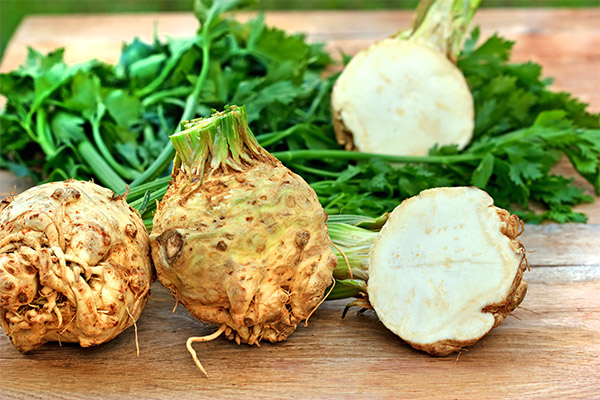
Including celery root in the diet improves the quality of sleep, allows you to get rid of overwork, nervous breakdown and depression. Infusion, prepared from the root of the vegetable culture, is used for rheumatism, gastritis with reduced acidity of the gastric juice produced, respiratory problems.
Celery juice: benefits and harms
The juice of the plant is obtained by pressing its petioles. The resulting drink has such useful properties:
- Cleanses the body from toxins and impurities.
- Normalizes the content of vitamins and trace elements in the body.
- Calms the nervous system.
- Has proven by scientists a positive effect on brain function.
- Improves memory and increases concentration.
- Restores visual acuity.
- Improves blood vessels by reducing cholesterol levels.
- Strengthens the immune system.
- It accelerates the elimination of urea from the body and reduces pain in the muscle tissues (relevant for sports activities).
- It has a mild laxative effect.
- Helps to increase sexual desire.
- Supports the balance of water in the body.
- Because of the iron content is useful during PMS and menopause.
- Restores the reproductive function.
It is important to observe moderation when drinking celery juice. The daily rate of the drink is 100 ml.
Celery juice is contraindicated during pregnancy, lactation and gastritis with high acidity.
How to use celery for weight loss
Nutritionists recommend including celery in the diet. The product has a negative nutritional value, that is, the body spends more energy to digest the plant than it receives. The vegetable is baked, boiled and consumed fresh. Parts of the plant are used to prepare a variety of dishes. The leaves are used as a flavorful dressing, and the seeds are used as a seasoning.
Celery is recommended to use not only during the diet, but also in everyday life. If you follow the basics of proper nutrition and the inclusion of the product in the diet, you can easily lose 2 to 3 kg in a week.
Celery in medicine
Due to its rich composition, celery is used for the treatment and prevention of a mass of ailments.
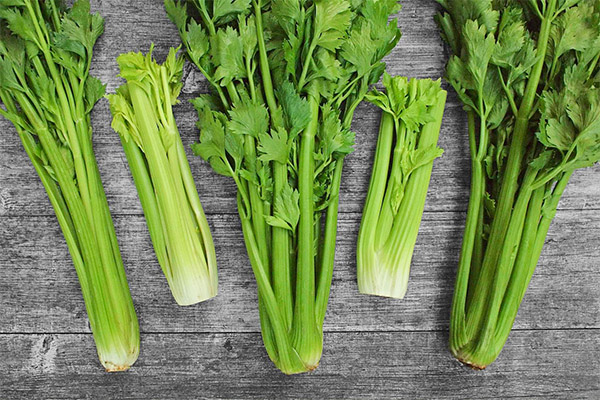
For diabetes
Experts recommend diabetics to include in their diet all parts of the vegetable culture: leaves, stems, roots. The product helps to normalize blood glucose levels. It has a low glycemic index, which is only 15 units, has a low nutritional value. In addition, the plant increases the production of a special pancreatic secretion, necessary for the breakdown of glucose.
When the disease is recommended to use a decoction of celery, which can be prepared at home. To do this, you need to grate or finely chop 20 grams of the root of the plant. Add 250 ml of liquid and boil for about 15 minutes. Use 30 ml before each meal.
When pancreatitis
Inflammation of the pancreas is a serious ailment. To improve the patient's condition, a strict diet is necessary, and in the first day after a painful attack, you should completely give up food.
In the acute form of the disease the use of celery in any form is excluded. Dietary fiber can provoke bloating of the stomach and significantly worsen the condition of the patient. Essential oils increase the production of digestive enzymes that destroy pancreatic tissue.
During remission, it is recommended that the vegetable be eaten limitedly fresh, giving preference to heat treatment. It can be added to soups, baked, used as a condiment.
In gastritis
With the disease, it is important to observe a proper diet, then the patient's condition will stabilize. Celery contains essential oils that can increase the production of gastric juice, so it is worth limiting the use of the product with gastritis with high acidity.
With gastritis with low acidity, the use of celery is allowed, as the vegetable crop maintains the necessary level of acidity. However, you should grind the product, as coarse dietary fiber is difficult to digest and can worsen the patient's condition.
For bowel
Celery contains dietary fiber, which helps to eliminate toxic substances and toxic compounds from the body. Also coarse fiber speeds up the digestion process. In addition, celery has an anti-inflammatory effect, so the inclusion in the diet of the vegetable culture helps to relieve pain and healing of damaged intestinal walls.
For the prevention of diseases of the gastrointestinal tract, nutritionists recommend the use of celery juice. To make it, you need to squeeze a small amount of plant stalks with a juicer. Juice is not subject to long-term storage, so it is recommended to prepare it immediately before consumption. The drink is recommended to use 50 ml in the morning and in the evening.
For constipation
The use of foods containing coarse fiber is the best prevention in the fight against constipation. Celery is the record-breaker in dietary fiber content, so this product is ideal for eliminating an unpleasant ailment. The laxative effect has the root of the plant. Therefore, to eliminate constipation, it is recommended to prepare an infusion. To do this, you need to pour 30 g of celery root with a glass of boiling water and insist for two hours. Take the resulting infusion of 25 ml before each meal until the elimination of unpleasant symptoms.
When gout
Gout refers to diseases that cannot be cured, you can only alleviate the condition of the patient. Celery contains a large amount of sodium in its composition, which accelerates the process of elimination of urea from the body, so patients with gouty arthritis should not refuse to eat this product. In addition, celery has the following positive effects:
- reduces pain in the affected joints;
- Accelerates the removal of excess fluid from the body;
- serves as a prophylactic for the development of urolithiasis;
- restores metabolism.
With the regular use of celery you can achieve improvement. The most common remedy for gout is a concentrated juice made from the vegetable crop. It is recommended to take 1 tablespoon before each meal.
To get rid of excess fluid will help infusion. For its preparation, 25 g of the seeds of the plant pour a glass of boiling water and insist for 5 hours. Take three times a day by 1 tablespoon.
Colitis
Colitis is a disease in which there is inflammation and damage to the intestinal mucosa. Essential oils contained in celery can increase the acidity of gastric juice, which is an aggressive environment and can cause the development of putrefactive processes. They can aggravate the course of the disease. Therefore, it is recommended to limit the consumption of celery in colitis.
For the liver
The liver is an important organ of the human body that synthesizes bile. It is necessary for digestion of food. Diseases of the liver can cause the development of gastrointestinal diseases. Stagnant bile increases the risk of gallstone disease, which is accompanied by severe pain. To prevent the disease, it is recommended to use celery juice, making sure to consult a specialist before starting therapy.
For the best bile outflow, it is recommended to take 25 ml of concentrated celery juice twice a day before meals. To prepare the drink, you need to squeeze the stems of the plant and pass through gauze folded several times.
When hemorrhoids.
Celery can be taken only in the initial stage of hemorrhoids in a limited amount during the period of persistent remission. In the acute form of the ailment, you should limit the use of the vegetable for a number of reasons:
- Vitamin K promotes blood clotting, so eating celery can cause hemorrhoid knots to enlarge.
- Including celery in your diet can cause fibrin to form, which forms the basis of a blood clot.
- The undigested residue of coarse fiber can damage hemorrhoid nodes, aggravating the course of the disease with unpleasant symptoms in the form of inflammation and bleeding.
In cholecystitis.
Inflammation of the walls of the gallbladder is a serious ailment that can cause it to be removed. In addition, cholecystitis can cause the development of cholelithiasis.
Taking a decoction of celery accelerates the outflow of bile and helps to reduce inflammation. You can prepare the drink at home, for this purpose, it is enough to pour 30 g of the plant root with a glass of water and boil for 10 minutes. Allow to infuse until completely cooled. Decoction is recommended to use three times a day for 20 minutes before a meal.
In any case, it is necessary to consult with a specialist, under whose supervision the treatment of any disease should be carried out. The doctor will choose the most appropriate treatment regimen, which will not harm your health.
Recipes of folk medicine based on celery
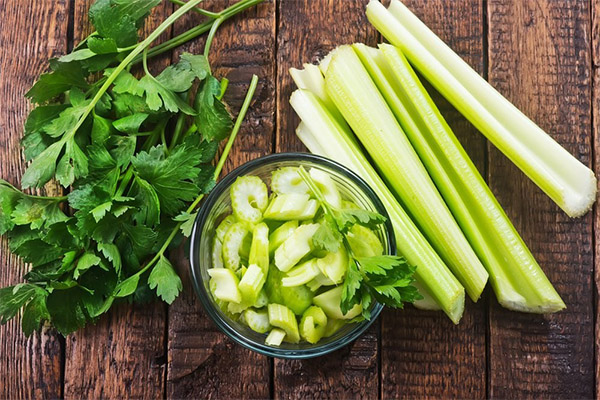
For premenstrual syndrome or menopause
Pour 5 grams of celery seeds in a glass of boiling water and allow to stand for 7 hours. Then strain the infusion through gauze. Take 25 ml three times a day for 20 minutes before meals.
When stones in the bladder
Pour 20 grams of the seeds of the plant in a glass of boiling water and send to simmer on water steam for about 20 minutes. The resulting decoction to take 50 ml in the morning and evening.
With prostatitis
Squeeze 100 ml of celery juice. You can use a juicer for this. Vegetable juice is not recommended to be stored for a long time. The recipe specifies the amount of ingredients necessary to prepare the daily rate of drink.
Combine the cooked juice with 20 g of honey and mix thoroughly. Take 25 ml three times a day. Keep the remaining mixture in the refrigerator for no more than one day.
For lowering cholesterol
Combine the juice of celery, nettle and dandelion in equal proportions. Take one teaspoon before breakfast.
For cystitis
Mix in equal proportions of celery seeds and honey. Take 5 grams three times a day.
In case of nervous breakdown.
Pour 20 g of dried leaves of the vegetable crop with cold water and bring to a boil over low heat and remove from the stove. Strain the decoction and drink as a tea drink.
For skin injuries
To accelerate the healing of small wounds, you will need 100 grams of dried leaves of the plant and 200 ml of boiling water. Combine the ingredients and allow to infuse for about two hours. After the required time, using a cotton pad, gently apply the infusion to the problem areas of the skin.
For normalization of reproductive activity
Grind 50 grams of celery root on a grater. To the resulting pulp add 400 ml of liquid and boil for one minute. Divide the decoction into 4 drinks and consume during the day.
Celery in cosmetology
Due to its rich composition and useful properties, celery has found use not only among adherents of folk methods of treatment, but also in the beauty industry.
For the face
Cleansing Scrub
Ingredients:
- 5 g dried celery root;
- 5g of honey;
- A pinch of dried ginger;
- pinch of nutmeg.
Crush the ginger root, combine with the rest of the ingredients and mix thoroughly. Apply the mixture to the face with massaging movements. After one minute rinse.
Mask for eliminating dry skin
Ingredients:
- 10 g of celery root;
- 10 g of high-fat cottage cheese;
- 10 g of sour cream.
Combine the ingredients and mix until a homogeneous mass. Mask applied to the face. Wash it off in 5 minutes.
Refreshing mask
Ingredients:
- 20 g of celery root;
- 5 ml of lemon juice;
- 10 g sour cream.
Grate celery root and combine with the rest of the ingredients. Stir the mixture until homogeneous and apply to the skin of the face. After 10 minutes, rinse off.
For hair
Shine mask
Ingredients:
- 25 ml of celery juice;
- 1 raw chicken egg yolk;
- 25 ml beer
- 20 g sour cream.
- 2 drops of tea tree essential oil.
Combine all the ingredients and mix thoroughly with a whisk or fork until smooth. Spread the mask from the roots to the ends of wet hair. After 15 minutes, rinse the composition and wash your head with shampoo.
Decoction to strengthen hair
Ingredients:
- 100 g dried celery leaves;
- 25 ml of apple cider vinegar 6%.
Pour 500 ml of water over the leaves of the plant and bring to a boil. Continue to boil for 2 minutes and remove from the stove. Leave to infuse until completely cooled. Add vinegar to the cool decoction and rinse clean hair. Repeat the therapy two times a week.
Mask for nourishing hair
Ingredients:
- 20 ml of celery juice;
- 1 egg yolk;
- Juice of half a lemon.
Combine the ingredients and mix thoroughly. Apply the composition to the entire length of the hair. After 25 minutes, rinse and shampoo your head.
Harm and contraindications
- From the use of celery, it is necessary to refuse to pregnant women, as the vegetable contains substances that increase the blood flow to the uterus. Violation of the recommendations can cause miscarriage in the early terms and cause premature birth in the third trimester of pregnancy.
- Celery juice can cause the movement of kidney stones. This process is accompanied by severe pain and may end in surgery.
- The substances contained in celery contribute to an increase in stomach acidity, so the product is contraindicated in gastritis with hyperacidity, peptic ulcer and colitis.
- Vitamin K, which is part of the plant, affects blood clotting, so it is worth refraining from eating celery for varicose veins and hemorrhoids.
Celery allergy symptoms
Essential oils, which are part of celery, can cause an allergic reaction. With extreme caution, the product should be introduced into the diet of a child. Start complementary feeding with a small portion, carefully monitoring the reaction over the course of a day. This approach also applies to an adult, who for the first time includes in his diet dishes containing celery.
If the vegetable crop is intolerant, various reactions may occur:
- urticaria (red watery pimples accompanied by severe itching);
- dermatitis (peeling of the skin on the palms of the hands and feet);
- nausea and vomiting;
- upset stomach;
- constipation.
How to choose and store celery
When choosing celery, you need to be guided by several rules:
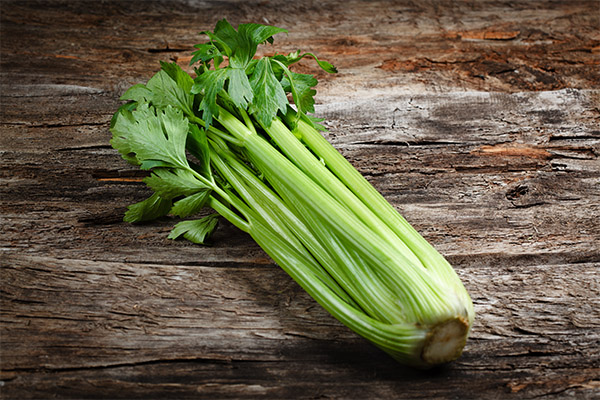
- The fresh plant has a bright lettuce hue and a pleasant aroma.
- The leaves look resilient and juicy, there are no dark spots or damage.
- A crunch can be heard as the stems separate from each other.
- An unripe plant has dark wilted leaves.
If there is no possibility to consume celery in the near future, you can save it. To do this, you need to perform a number of actions.
- Thoroughly wash the vegetable.
- Dry it on a kitchen towel.
- Put it into aluminum foil for storage.
- Put into the fridge.
Dried celery can be stored for 12 months. All parts of the plant can be dried. To do this, the vegetable needs to be washed and dried on paper towel. Then peel the skin and cut into small pieces. Then leave it to dry in a well-ventilated room. To speed up the process, you can use an oven or a special dryer for vegetables. When the celery dries, it should be placed in glass or ceramic containers for further storage.
Extend the shelf life of the plant can be using salt. The fact that it is a natural preservative is known to everyone. For salting you will need the following ingredients:
- 1 kg of celery;
- 200 grams of salt;
- ground black pepper;
- currant leaf.
Preparation method:
- Chop the plant with a blender or finely chop it.
- Add salt (recommended to use coarse).
- Sterilized glass jars can be filled with the resulting mass and tighten the lids.
Can I freeze
After freezing celery retains most of its useful properties. Therefore, the method is excellent for storing the vegetable crop. It is cut into small pieces, placed in containers or special bags and sent to the freezer. Leaves and root can also be frozen. This method allows you to use a useful product throughout the year.
How to eat celery correctly
Eating the right foods will not harm your health. The most important thing is to observe the measure. This rule applies to celery as well. Excessive consumption of the product can cause a number of negative consequences:
- exacerbation of urolithiasis;
- gas formation in the intestines;
- occurrence of colic in the infant;
- uterine tonus in pregnant women.
How much you can eat per day
Nutritionists recommend consuming no more than 200 g of celery in fresh and cooked form per day. The norm of concentrated juice of the plant should not exceed 100 ml.
Is it possible to eat at night on an empty stomach
The consumption of celery provokes the production of gastric juice, so thirty minutes after eating it, it is recommended to start eating.
Celery is called a natural antidepressant. The product calms the nervous system, allows you to overcome stress and normalize sleep. To fight insomnia, you should use 50 grams of the plant 1,5-2 hours before going to bed. Vegetable crop has a low caloric value, the value of which is only 13 kcal. Therefore, consuming celery late at night, you should not worry about the figure.
Can I eat celery raw?
Celery refers to those products in which all parts are suitable for food. The greatest amount of useful substances is contained in the fresh plant. After drying, freezing and heat treatment some of the useful substances are reduced, so it is preferable to eat celery in its raw form. It is added to salads, used as a garnish, prepared juices and smoothies.
How to properly peel celery
Anyone who has never tried this useful product, it is important to know how to properly process it before eating it.
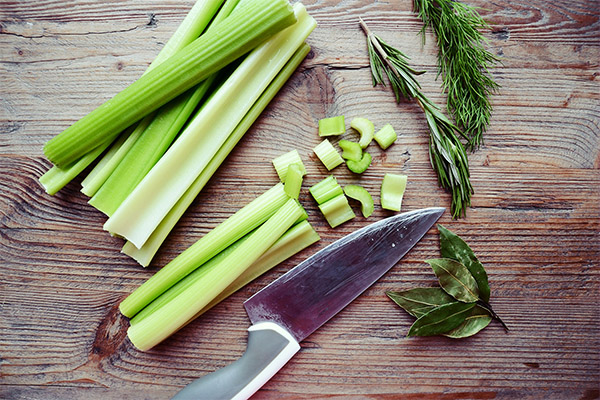
The leaves are enough to rinse under water, but with the roots and stems the question is a little different. Root crops are covered with a rather rough skin, to facilitate the process of cleaning you need to choose a vegetable with a smoother and less rough surface. The greens at the top should have a rich green color and fresh appearance. Such roots are much easier to peel and have fewer peelings.
So, to clean root celery, you need to do the following steps:
- Rinse the root thoroughly, remove the bottom and top;
- Cut off the skin with a vegetable peeler or knife with a narrow blade;
- Remove any discoloration;
- drop the root vegetable into a container of water so that it does not darken.
Petioles celery should be peeled if the crop was harvested a long time ago. Young petioles just rinse under running water before eating.
What can be cooked from celery: recipes
From celery you can prepare a huge number of the most diverse dishes. Let's consider the most popular of them.
Juice
To prepare the juice, it is enough to squeeze the stalks of celery with a juicer and strain through gauze. The drink has a specific taste, so it is not easy to use in pure form. To soften the taste, you should dilute the celery juice with any fruit juice or water.
Salad
Ingredients:
- 3 celery stalks;
- 2 medium sized cucumbers;
- lettuce leaves;
- Cherry tomatoes - 100 g;
- 30 ml of olive oil;
- salt, pepper.
Method of preparation:
- Dice celery petioles and cucumbers and transfer to a salad bowl.
- Tear the lettuce leaves with your hands.
- Finish with olive oil and season to taste.
- Decorate with cherry tomatoes.
Soup
Ingredients:
- 3 celery stalks;
- 1 small onion;
- 3 medium sized potatoes;
- 1 small carrot;
- 1 liter of chicken broth;
- 50 ml cream;
- 30 g of butter;
- salt, pepper.
Method of preparation:
- In butter, fry finely chopped onion, grated carrots and diced celery.
- Add diced potatoes to the broth. Bring to a boil and continue to boil for 10 minutes.
- After 10 minutes add fried vegetables to the pot. After 3 minutes, turn off the heat.
- Add cream and spices.
- Immerse a blender in the pot and whisk the soup until smooth.
The puree soup is ready to eat.
Smoothie
Ingredients:
- 1 stalk of celery;
- half an apple;
- 1 small carrot;
- 1 kiwi;
- 50 ml water.
Method of preparation:
- Grate carrots and send to the bowl of a blender.
- Coarsely chop the rest of the ingredients and add to the carrots.
- Add water and whisk until smooth.
How to roast
As a flavorful side dish, you can roast celery. For frying, most often all use the stalks of the plant. The dish will pleasantly surprise by the simplicity of preparation and minimal time consumption.
Ingredients:
- 3 stalks of celery;
- 1 medium sized onion;
- 1 small carrot;
- 200 g string beans;
- 30 g of butter;
- salt, pepper.
Method of preparation:
- Before cooking, wash the vegetables thoroughly.
- Grate carrots, cut onion into thin half rings.
- Heat a frying pan and melt the butter. Add carrots and onions. Sauté for two minutes.
- Cut the celery into rings and add them to the pan.
- Add the green beans. If using frozen product, there is no need to defrost it beforehand.
- Add salt and spices. Continue to roast until golden brown, about 15 minutes.
Can celery be given to pets?
Pets rightly occupy an important place in the life of their owner. Owners try to do everything for the health and happiness of their pet. The benefits of celery for the human body are widely known throughout the world. Therefore, many people wonder whether it is possible to include a useful product in the diet of a pet.
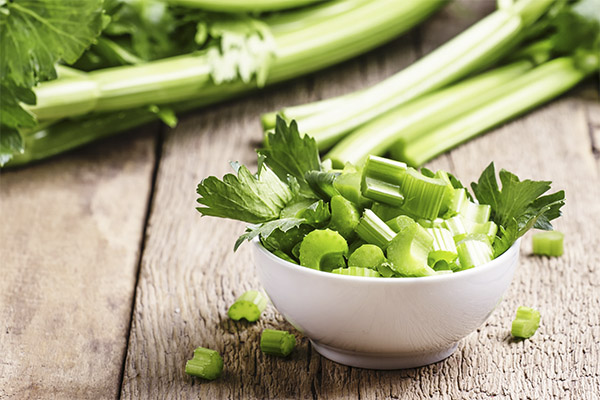
The plant can be offered to the pet, but not every pet will have to taste the product, which has a bright aroma and quite spicy taste. Since celery can cause a severe allergic reaction, you should start with a small piece, and then carefully observe the condition and behavior of the pet. If no changes are observed, the portion can be gradually increased.
Guinea pigs
There are no clear contraindications to the consumption of celery by guinea pigs. If the animal liked the plant, you do not need to feed it only celery. It is enough to give him a few pieces to chew on. The rodent's diet should remain varied.
Celery contains a huge amount of micronutrients that are essential for keeping the pig healthy. Many commercially produced foods for rodents contain celery extract.
Dogs
If the dog has shown interest in the vegetable crop, you should not deny the animal the pleasure of trying a new product. Celery contains many vitamins and trace elements necessary for the normal functioning of the digestive system of the animal. In addition, the plant will help the dog in case of an upset stomach, relieve constipation, and calm the nervous system.
The dog will have a hard time with celery stalks, which contain a significant amount of plant fiber. Therefore, the vegetable should be cut into small pieces before giving it to the pet to try. The pet can be offered raw petioles or those cooked in a steam bath.
The cut root will be difficult for the dog to chew, so it should be grated. This part of the plant will freshen the pet's breath and remove plaque. In addition, the inclusion of celery root in the pet's diet contributes to the removal of toxins from the body, the prevention of diseases of the urogenital system and healthy growth of the coat.
The product can only be introduced into the diet of a healthy animal. You should never force your pet to eat it, since dogs do not have the same need for vegetables as humans.
Celery leaves contain a higher concentration of micronutrients compared to other parts of the plant, but there is no information about their effects on the dog's body. Because of this, you should not give this part of the plant to an animal.
Cats
Cats are more willful than dogs. These animals are incredibly picky eaters. It is impossible to feed them any food without a special reason. Veterinarians believe that cats' interest in greens and vegetables indicates a lack of vitamins and minerals in the cat's body. Studies have shown that this is true. Besides the cat's instinct will not deceive him, so if the cat expressed the desire to eat celery it means it is necessary for health reasons.
Hamsters
Hamsters, like guinea pigs, can be given celery. There are no specific contraindications to this. Not without reason, because manufacturers produce feeds for hamsters that contain an extract of this plant.
It is best to include pieces of young petioles in the diet, enough to give your pet a couple of small pieces. Plant fiber is good for the rodents' teeth, coat and digestive system.
Ducklings
Ducklings are contraindicated from foods containing large amounts of salt. Despite the fact that celery does not have a pronounced salty taste, it contains a significant concentration of sodium. But it is not necessary to worry about this, the snail will refuse the product, which may cause its death, so you can safely include celery in its diet.
Rabbits
Rabbits have a rather delicate digestive tract, so you should not give them celery purchased in the store. As a rule, the vegetable is treated with preservatives and chemicals for long storage. But actually grown celery can safely be included in the menu of the animal. Usually celery stalks are mixed with other vegetables and fruits to feed rabbits.
The product contains a lot of vegetable fiber, so eating large amounts of celery promotes rapid build-up of muscle mass. For this reason, the plant is most commonly used by farmers raising rabbits for meat.
Parrot
Because of its large amount of essential oils, celery is contraindicated for parrots as a food. In addition, there are no reliable studies on this matter. For this reason, it is not worth risking the life and health of the pet.
Interesting facts about celery
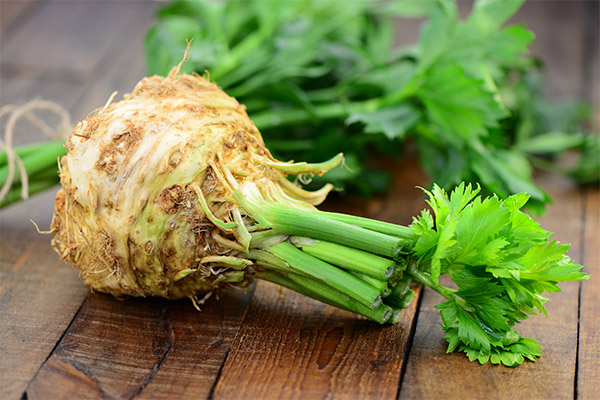
- Another name of the plant is fragrant parsley.
- The product has a so-called negative caloric value. That is, the body spends more energy to digest the dietary fiber of celery than it receives when eating the plant.
- Celery contains very few calories, only 13 kcal per 100 grams. That is why it is often present in the menu of people who care about their figure.
- The product reduces appetite due to the fact that the body has to expend a lot of energy to digest the coarse plant fibers.
- The proponents of folk healing methods call celery a natural antibiotic, as the plant has anti-inflammatory properties.
- The antioxidants contained in the plant keep the skin and hair young.
- The harvested celery retains its useful properties for seven days, after which their concentration decreases significantly.
- In ancient times, the juice of the plant was called a love potion. To prepare it, 50 g of celery juice, 25 g of apple juice and 25 g of pear juice were mixed. It was believed that the drink increased male potency.
- Vegetable fiber contained in the plant helps to eliminate toxic substances and toxic compounds. Therefore, celery should be included in the diet of people who have bad habits.
- Vegetable fiber ensures rapid growth of muscle tissue, and useful components help the body recover after heavy physical exertion. For this reason, in ancient times celery was considered a food for the strongest men. In the winners of gladiatorial contests, the leaves of the plant were woven into wreaths, which they were awarded with.
- The first mention of celery in the Russian Empire dates back to the 17th century. The greatest popularity this plant received during the reign of Catherine II.
- George Taylor, a traveler from Scotland, first introduced the useful vegetable in the middle of the XIX century.
- The city of Arvada, which is located in the United States in Colorado, is considered the capital of the vegetable culture. There is a museum, which is entirely dedicated to celery.
- Healers in China revere the plant for its ability to regulate blood pressure. Modern scientists managed to find out that the product is really necessary for people suffering from hypertension. In addition, celery regulates the amount of cholesterol.
- The plant calms the nervous system and helps to eliminate depression in its early stages. Many folk healers use celery as a herbal sleeping aid.
- Tutankhamun's funeral robes were decorated with wreaths in which celery leaves were woven.
- Homer's works mention whole fields of celery.
- The French Madame de Pompadour, who was a famous courtesan and mistress of Louis XV, deliberately ate celery soup in order to overcome her frigidity and become the most attractive lady worthy of royal attention.
- Casanova, the world-famous hero-lover, was a passionate celery lover.
- A small amount of seeds is enough to grow a huge plantation of the plant.
- The root of the plant is capable of causing severe allergic reactions. In this regard, the safest parts to eat are the stalks of celery.
- Celery, onions, and carrots form the basis of French cuisine.
- Celery is part of the famous Bloody Mary cocktail.
«Important: All information on this site is provided for informational purposes only purposes only. Check with your health care professional before using any of our recommendations. specialist before using any of the recommendations. Neither the editors nor the authors shall be liable for any possible harm caused by materials."

